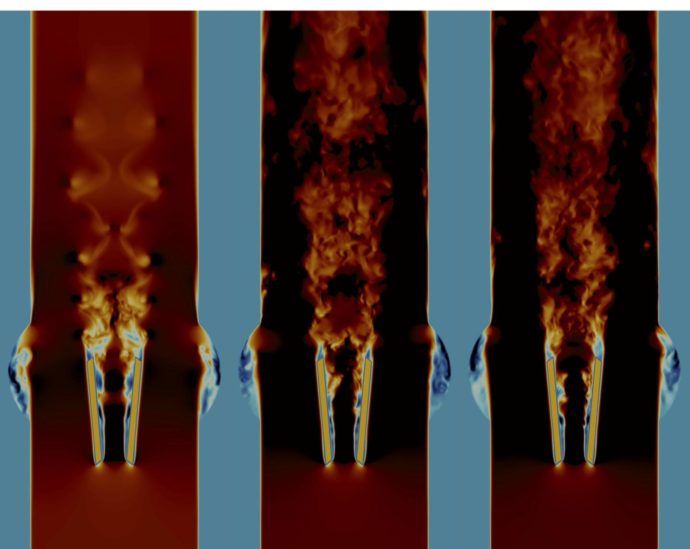
Engineers from the University of Bern has identified a mechanism that significantly contributes to blood turbulence around mechanical heart valves.
The researchers, from the Cardiovascular Engineering Group at the ARTORG Center for Biomedical Engineering Research at the University of Bern, tackled the problem of what they termed an “unphysiological turbulent flow in the ascending aorta” that occurs with bileaflet mechanical heart valves (BMHVs). Their computer simulations showed that the flow-regulating flaps on the observed heart valves led to stronger turbulence around the valve. The end result is a higher risk for coagulation and clotting of the blood in areas just behind the valve.
“By navigating through the simulation data, we found how the blood impinges at the front edge of the valve flaps, and how the blood flow quickly becomes unstable and forms turbulent vortices,” lead author Hadi Zolfaghari, said in a press release. “Supercomputers helped us to capture one root cause of turbulence in these valves, and hydrodynamic stability theory helped us to find an engineering fix for it.”
The fix, according to the paper, was a modification to the valve leaflet geometry that eliminated the impinging leading-edge vortex and corrected the pocket of absolute instability acting as a wavemaker between the leaflets.
“The design of mechanical heart valves has hardly been adapted since their development in the 1970s,” Dominik Obrist, head of the research group at the ARTORG Center, explained in a press release accompanying the study. “By contrast, a lot of research and development has been conducted in other engineering areas, such as aircraft design. Considering how many people have an artificial heart valve, it is time to talk about design optimizations also in this area in order to give these people a better life.”
The study results, according to the authors, would hopefully a strong start in tweaking and improving the design of future mechanical heart valves.
“The results of this study are a first step toward a detailed understanding of the hydrodynamic instability mechanisms which lead to turbulent flow past BMHVs,” they authors wrote in their study. The full results are published in Physical Review Fluids.
IMAGE: Time evolution (from left to right) of systolic turbulent blood flow past a bileaflet mechanical heart valve. Credit: H. Zolfaghari, ARTORG Center, University of Bern
https://twitter.com/zangaridelbalzo/statuses/1204139584608710656
Phys. Rev. Fluids 4, 123901 (2019) – Absolute instability of impinging leading edge vortices in a submodel of a bileaflet mechanical heart valve https://t.co/1g5QxxmyP4
— Hadi Zolfaghari (@ZolfaghariHadi) December 18, 2019







 © 2025 Mashup Media, LLC, a Formedics Property. All Rights Reserved.
© 2025 Mashup Media, LLC, a Formedics Property. All Rights Reserved.